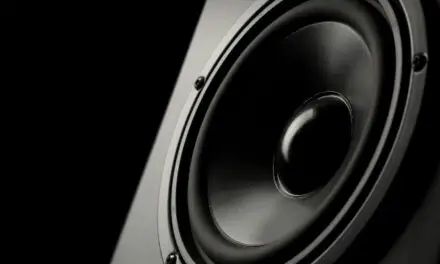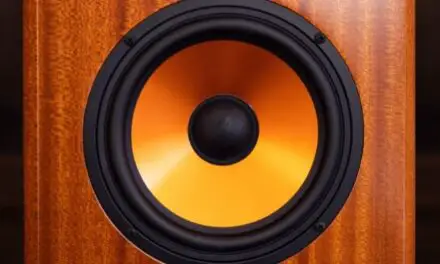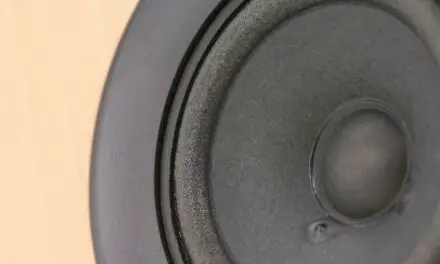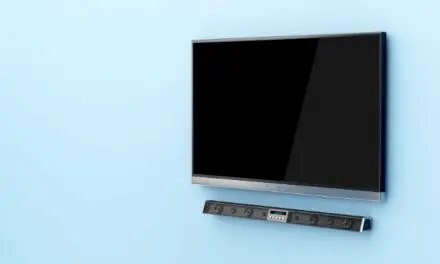Projectors have been gaining popularity in recent years, especially with the advent of smaller and more portable, higher quality projectors.
If you don’t have white walls, however, you may be wondering how that would affect the picture quality.
Table of Contents
Will A Projector Work On A Colored Wall?
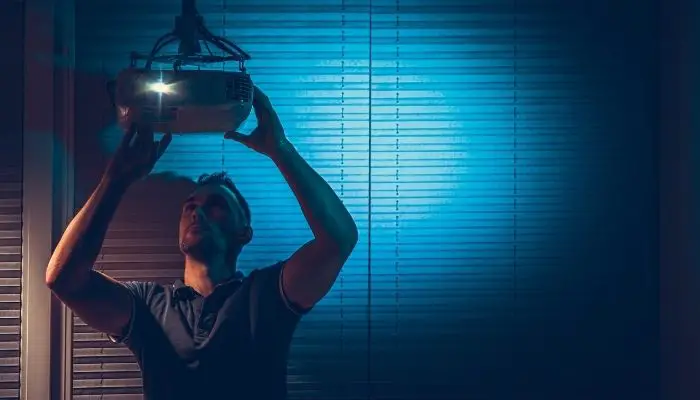
Projectors will work on colored walls but there may be an issue with how the color of the wall and the quality of the projector, including lumens, affect each other.
It boils down to the color of the wall you’re considering and the projector’s capabilities.
A grey wall is going to affect the black levels and how bright the picture looks.
Depending on the brightness of your projector and how dark the grey color of your wall is, blacks may appear quite deep and your picture may begin to look almost black and white.
For projecting onto a painted wall, the color white can work really well and produce a clear, bright picture with very good color accuracy.
Because white reflects back so much light it is best suited for darker rooms.
As ambient lighting increases in a room, the image projected onto a white wall can quickly begin to look washed out.
However, red, green, or blue-colored walls will throw off the colors of your picture significantly and leave it looking washed out with whatever color your wall is painted.
If you have a projector that allows you to adjust the color balance, the picture may not be affected that badly by a red, green, or blue-colored wall.
The visible light spectrum—that old classroom adage of ROY G BIV—is entirely different from color pigmentation.
This is especially true when considering how whites and blacks work with paint, light, or the absence of light.
The texture of the wall you are projecting onto can also have a big impact on picture quality, especially if your projector is 4K or even HD.
If your wall is not completely smooth, all of the imperfections will show up as images move across the screen.
For example, projecting onto bricks usually looks terrible.
What Is The Best Color To Paint A Wall For A Projector?
The best colors to paint a wall for a projector are going to be black, white, and gray, with gray standing above the rest, especially dark gray.
It’s all about how light is reflected and absorbed, along with the ambient light of the room.
A white wall will reflect back the most light projected onto it from a projector.
However, for you to get the best results, the rest of the room needs to be entirely dark.
The strength of white is its ability to reflect.
When you have a lot of ambient light, it produces a weakness as it is reflecting too much.
With a white wall, you get most of the features that the projector has to offer, but only in a completely blacked-out room.
Black walls may surprise you.
Since most people assume that black’s light absorption level is too much for a projector, they’re surprised at how well it actually turns out.
The drawback with black is that you’ll need a lot of lumens to compensate for the rate at which black absorbs light.
Gray walls are a happy in-between of white and black, reflecting just enough while not absorbing too much.
Gray also deepens the blacks in the projected visuals, which is a much-preferred factor in HD TVs today.
Which Colored Walls Are Best For Brighter Rooms?
If you have a decently lit room, such as a living room or a den, you’ll want to go with a black or a dark gray wall.
The ambient light in the room won’t have an effect on a dark wall’s ability to produce an HD picture with deeper and truer-to-life blacks.
A darker gray is also a good choice, and for the same reasons.
The lighter the screen, in a room with ambient light sources, the more difficult it will be for the screen to take full advantage of the projector’s strengths.
The deeper blacks only increase when you drop down to a darker gray, however, the darker you go, the more lumens you’ll need to compensate.
Gray is at its best if you have a projector with at least 3,500 lumens of brightness.
You also don’t want to make the mistake of having the projector in a location that’s too far from the wall.
The best thing you can do is test it for yourself.
Print out different shades of white and grey onto A4 sheets and project onto a few of them simultaneously to see which color produces the best image.
Set up your viewing room the way it will be when you will be watching something with your projector and project the same image onto different shades to get a good feel for the one that will best suit your room.
You may also like: Can A Projector Screen Get Wet? (And What To Do If It Does)
Will Projectors Work With Brightly Colored Walls?
It depends on the projector.
Newer innovations in projector technology include the capability of ascertaining the color of your wall and compensating with different color levels.
Older projectors have difficulty with brightly colored walls as they effectively whitewash the entire picture.
If you’re using an older projector, it’s best to purchase a black, white, or gray screen.
Newer projectors utilize what’s called “smart color detection” technology.
These projectors have a set number of hues through which they adjust according to the background the projectors detect.
They also brighten and darken in order to project the best light onto a given color.
Once it detects the color, it will project the best light and color hue to offset the washout effect.
Does Projector Paint Make A Difference?
Projector paint does make a difference because it reflects more light back from the projector which enhances the picture’s quality, contrast, color saturation, and brightness.
Ordinary paint absorbs more light than projector paint which has a higher light reflectance value (LRV).
You’ll find many projector paint options online and it can be difficult to differentiate between the good and the ones that provide insufficient smoothness, gain, or color accuracy.
If you’re looking for quality projector paint, I would recommend Screen Goo by Goo Systems.
Screen Goo is specially formatted for the video projection industry and can turn your smooth wall into a high-performance home cinema screen.
Should I Just Get A Projector Screen?
If you have the space for a projector screen then it’s probably better to get one instead of painting a wall for your projector.
Screens will range in price depending on their size, material, and whether they are powered or manual pull-down.
However, you can get a decent screen – like the VIVO 84 inch Portable Indoor/Outdoor Projector Screen – for as low as $80.
A quality projector screen – because it is purposefully built to reflect an optimum amount of light – will provide a better quality and higher definition picture when compared to projecting onto a wall.
How light is reflected is the key to a great viewing experience and a wall simply cannot compete with a well-made screen.
It’s easier to find a projector screen to suit your projector and the specific lighting of your room.
Different screens have various amounts of “gain,” (or how much additional light they reflect back compared to a surface that reflects a uniform amount of light), so if your projector isn’t the brightest, you can go for a screen that provides more gain to get a better quality image.
Final Thoughts
Projectors have come a long way since the days of the big, bulky devices you could only find in theaters or in boring conference meetings.
With new color and lighting technology, you can work with almost any color wall.
However, for the absolute best picture possible, white walls will continue to rule the roost in completely dark rooms.
Black and gray screens will dominate any competing color in rooms that have a source or two of ambient light.
